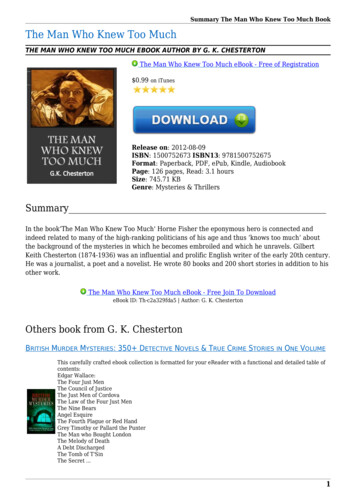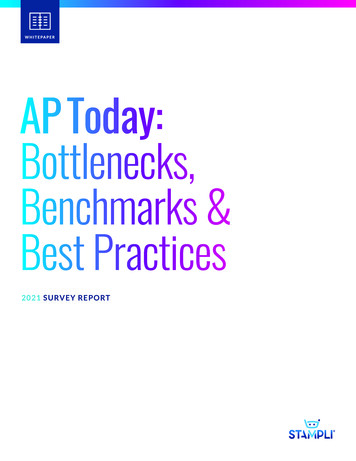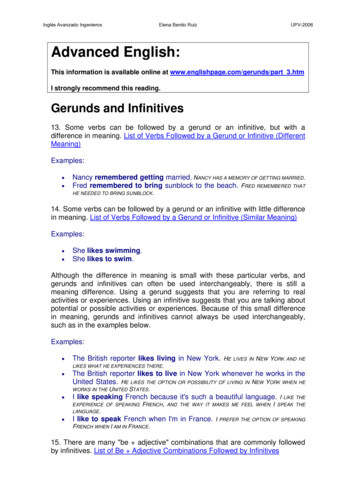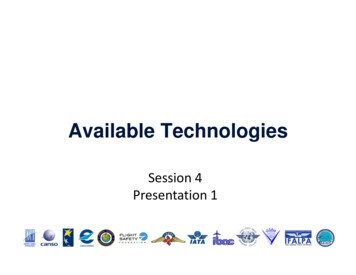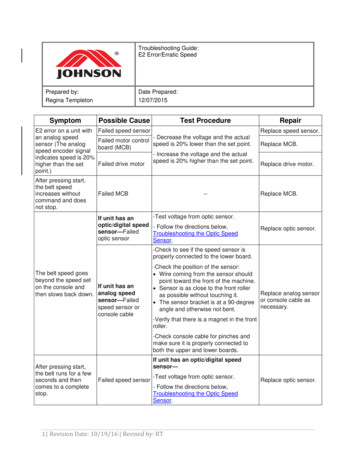
Transcription
Information Systems Education Journal (ISEDJ)ISSN: 1545-679X14 (2)March 2016Teaching CaseToo Much of a Good Thing:User Leadership at TPACBrett Connellyconnelbe@miamioh.eduTashia Daltondaltontm@miamioh.eduDerrick Murphymurphyd1@miamioh.eduDaniel Rosalesrosaledh@miamioh.eduDaniel Sudlowsudlowdj@miamioh.eduDouglas Havelkadouglas.havelka@miamioh.eduInformation Systems & AnalyticsMiami UniversityOxford, Ohio, 45255, USAAbstractTPAC is a small third party health claims business that was seeking avenues for revenue growth andopportunities to increase efficiency. One course of action that management selected to achieve thesegoals was a change in the software application used to process claims. The new application wasadopted to increase the speed and accuracy of claims processing. Given the enthusiastic motivation ofthe claims department manager, Susie Jeffer, and the importance of the new application to the Claimsdepartment; Susie was selected to lead the project. The case details the challenges the organizationfaced by selecting a leader for this critical project that had no project leadership experience or ITbackground. The implications of this decision on the business operations are presented and thensolutions to the situation are explored. This case is targeted for an MBA IT management or strategycourse; but could be used in an introductory course, a systems development course, or a senior-levelundergraduate IS/T capstone course.Keywords: teaching case, systems selection, project management, leadership 2016 ISCAP (Information Systems and Computing Academic Professionals)http://www.isedj.org; http://iscap.infoPage 34
Information Systems Education Journal (ISEDJ)ISSN: 1545-679X1. INTRODUCTIONIt was a Monday morning in late October, a chillwind was in the air. Susie Jeffer leaned back inher chair, reflecting that her over-priced Chaitea latte and dry scone were not going to beenough to get her through the difficult meetingscheduled in the next hour with the companypresident.Recently hired as a claims manager, Susie Jefferhad joined TPAC after 15 years in the healthcareindustry. TPAC is a small third party healthclaims business located in El Paso, Texas. Thecompany recently hired a new President withover 20 years' experience from a large thirdparty health claims competitor and was planningto grow the business. To facilitate this growth, areview of the IT (information technology)infrastructure had been performed and arecommendation made to update the claimsprocessing software application to lower costswhich would allow TPAC to compete with itslarger competitors and attract new customers.14 (2)March 2016what she’d been given.As far as she wasconcerned, her best had been stellar.However, Jeffer was still fuming over seniormanagement’s recent criticism concerning thelack of programming she had put into the newsystem. If more capabilities were to be wrungout of the system, she would need a team toimplement additional upgrades.Jeffer’s upcoming meeting with companypresident Sandy Davis had her worried, sinceDavis had become critical of Jeffer’s handling ofthe implementation. Davis unabashedly voicedthe opinion that TPAC now found itself back inthe same spot they had been with the oldsystem: it needed manual intervention, it waserror prone, and it slowed claims turnaround. Asshe sipped at her Chai tea, Jeffer contemplatedthe long hours of work ahead. How will heremployees adapt? Will her customers see abenefit? Or, will the company lose customersrather than grow the business?2. THE ROLE OF A TPAThe previous claims processing system did nothave necessary capabilities to meet client needs.TPAC had become known for its flexibility incustomizing benefit plan designs to help clientsprovide their employees an affordable benefitpackage that fit within the company’s budget.The previous system did not have the ability toautoadjudicateclaimswithoutmanualintervention. Auto-adjudication is the ability toapprove (or deny) a claim b
goals was a change in the software application used to process claims. The new application was adopted to increase the speed and accuracy of claims processing. Given the enthusiastic motivation of the claims department manager, Susie Jeffer, and the importance of the new application to the Claims department; Susie was selected to lead the project.
